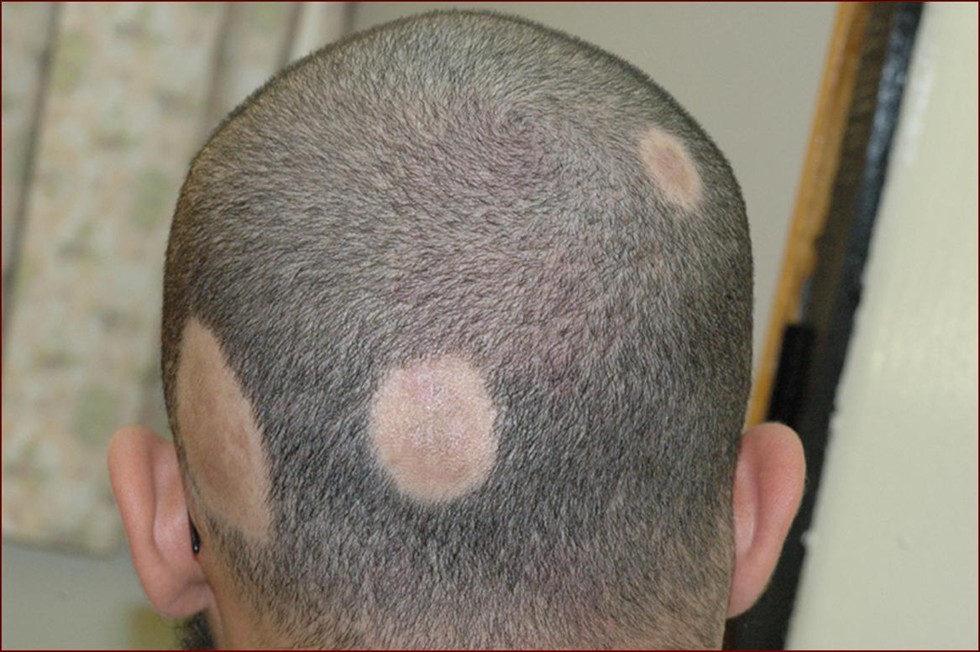RINGWORM
. Although it is a benign condition and most patients are asymptomatic, it can cause emotional and psychosocial distress.
Signs and symptoms
Alopecia areata most often is asymptomatic, but some patients (14%) experience a burning sensation or pruritus in the affected area. The condition usually is localized when it first appears, as follows:
Single patch - 80%
Two patches - 2.5%
Multiple patches - 7.7%
No correlation exists between the number of patches at onset and subsequent severity.
Alopecia areata can affect any hair-bearing area, and more than one area can be affected at once. Frequency of involvement at particular sites is as follows:
Scalp - 66.8-95%
Beard - 28% of males
Eyebrows - 3.8%
Extremities - 1.3%
Associated conditions may include the following:
Atopic dermatitis
Vitiligo
Thyroid disease
Collagen-vascular diseases
Down syndrome
Psychiatric disorders - Anxiety, personality disorders, depression, and paranoid disorders
Stressful life events in the 6 months before onset
Alopecia areata can be classified according to its pattern, as follows:
Reticular - Hair loss is more extensive and the patches coalesce
Ophiasis - Hair loss is localized to the sides and lower back of the scalp
Sisaipho (ophiasis spelled backwards) - Hair loss spares the sides and back of the head
Alopecia totalis - 100% hair loss on the scalp
Alopecia universalis - Complete loss of hair on all hair-bearing areas
Nail involvement, predominantly of the fingernails, is found in 6.8-49.4% of patients, most commonly in severe cases. Pitting is the most common; other reported abnormalities have included trachyonychia, Beau lines, onychorrhexis, onychomadesis, koilonychias, leukonychia, and red lunulae